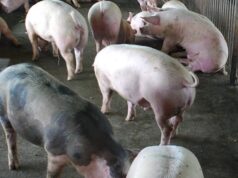CITY OF SAN FERNANDO – Getting rid of mosquitoes that cause dengue, or even malaria and yellow fever, can be inexpensive and uncomplicated after all.
The provincial health office (PHO) of Nueva Ecija, headed by Dr. Benjamin Lopez, has urged folk in his province to battle against rising cases of dengue by creating an effective, but simple trap for mosquito carriers of the disease.
Lopez said the trap that requires only ordinary items found in most households and produces carbon dioxide that attracts mosquitoes.
He noted that blood itself does not lure mosquitoes, as much as the carbon dioxide that humans exhale does.
Mosquitoes, however, are also known to be attracted to strong smells, such as those from perfumes, shampoos and body lotions. They may also be attracted to the smell of even eaten foods such as bananas.
Noting that at least five victims have already died from dengue so far this year in Nueva Ecija, and five each in other provinces of Central Luzon, Lopez said that the mosquito trap could significantly curb the population of Aedes Agypti mosquitoes whose females transmit the dengue virus to humans.
A search in the Internet would reveal some websites, including mosquitoinfo.info, as well as several blogs also promote the same trap that Lopez is pushing in Nueva Ecija.
Lopez noted that the materials for the trap are common household items including an empty one or two-liter plastic soft-drink bottle, two cups of water, four tablespoons of brown sugar, a pinch of yeast, and any black material that can be used as wrapper.
The following are the procedures for the trap: Using a knife or a cutter, cut the plastic bottle into half, in a way that the neck tip of the upper portion, when inverted and inserted into the bottom half, would not touch the solution that would later be poured into the bottom.
Next, boil one cup of water and dissolve in it four tablespoons of brown sugar. Off the stove, add the remaining water until the solution cools down before adding once pinch of yeast.
“This solution will generate carbon dioxide that attracts mosquitoes,” Lopez said. Pour the solution into the bottom part of the bottle which should then be wrapped around with black material.
Invert the top portion of the bottle and insert it into the wrapped container in such a way that the opening of the bottle neck, acting like a funnel, would serve as the only way for lured mosquitoes to reach the solution.
The bottleneck tip should not touch the solution but should be close enough to drown entering mosquitoes through the funnel, Lopez said.
The trap should be placed in an area where mosquitoes normally proliferate. It should be checked, cleaned, and its solution replaced once every two weeks.
The Department of Health (DOH) in Central Luzon listed Nueva Ecija as having the second most number of denque cases in the region with 1,666 cases, next to Bulacan which registered 2,259 cases.
Third in the number of cases was Pampanga with 1,390, Tarlac with 736; Bataan with 525; Zambales with 350, and Aurora with 43 cases.
With a total of 6,969 dengue cases in the region so far this year, the DOH noted 284 percent increase in such cases compared to the same period last year.
In Nueva Ecija, which has five cities and 27 towns, Cabanatuan City had the most number of cases at 495, followed by Talavera with 113 ; San Jose City, with 81; Science City of Muñoz with 81 and Sto. Domingo with 52.
Also in the top 10 with dengue cases are Aliaga, Gapan City at Jaen with 47 cases each, Santa Rosa with 44, at San Leonardo with 42.



